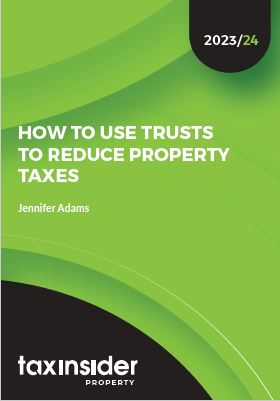
For more in depth discussion on this important area of property taxation, please see our recently updated report ‘How to Use Trusts to Reduce Property Taxes’.
Trusts can be at the centre of tax planning for the simple reason that they can act as another person. A trust broadly involves giving assets away for inheritance tax (IHT) purposes, whilst still retaining some degree of control over that gift.
What is a trust?
Essentially, a trust arises when the legal and beneficial ownership of an asset is split and placed into the hands of different people.
Assets are placed into trust by a ‘settlor’ who decrees that the recipient of the gift (the ‘trustees’ – there are usually between two and four) holds the legal title for someone else (i.e., the beneficiaries). The settlor could also be a trustee – retaining the legal title and assuming the duties of a trustee but passing the beneficial ownership to someone else.
What are the different types of trust?
A ‘discretionary’ trust (as the name indicates) is one whereby the trustees have complete discretion over what happens to the capital and income within the trust. These trusts usually provide for a group of beneficiaries (e.g., the settlor’s grandchildren and their future issue).
Whilst income within the trust is subject to additional rates of tax, beneficiaries receive any income distributions with a refundable 45% tax credit against their own tax liabilities.
An interest in possession (IIP) trust is one in which the beneficiary (usually one – the ‘life tenant’) has a right to use the asset (or receive the income therefrom) for the rest of their life. This income is generally subject to basic-rate income tax. Upon the life tenant’s death, the trust is usually dissolved, with the asset passing into the absolute possession of a ‘remainderman’.
IIP trusts are useful when catering for a particular individual for the rest of their life – traditionally a surviving spouse with the marital home; however, discretionary trusts are generally used for longer-term succession planning. A trust can last for up to 125 years, so several generations of a family can be catered for by a trust.
What can a trust be used for?
Very often, the concern is to ensure assets stay in the family after the life of the settlor (i.e., keeping the ‘family silver’ safe). The assets locked away into a trust can only be held for the beneficiaries, so generally (although it is not guaranteed), such assets will be safe from a beneficiary’s divorce proceedings or creditors. A settlor might want to give the asset to their children but worry that the burden of possession would be beyond them – if in trust, the children can benefit as if they owned it but the legal title remains safe with trusted individuals.
Trusts can be set up in a settlor’s lifetime or as part of a will, so they can form part of both lifetime and death planning.
As well as benefiting future generations, the establishment of a trust can be a very useful tax planning tool for settlors. Because the trust is another person for IHT purposes, transferring an asset into trust (even if the settlor remains a trustee) counts as a transfer – after seven years’ duration, it is outside the settlor’s estate. In almost all cases, if the settlor puts an asset into trust, they also pay no capital gains tax (CGT) on the gift; the gain is ‘held over’ and tax is only paid by the trustees or beneficiaries when that asset is sold to a third party. Gifting an asset directly means it belongs to the recipient and is theirs to lose – placing the asset into trust will not only keep the asset safe but also save the donor on the CGT they would otherwise pay.
Practical tip
Trusts are a very useful succession planning tool, with tax and non-tax advantages. However, they must be part of a wider succession plan alongside other options; they will not be suitable in all instances. Each case, and the intentions of the family members involved, should be carefully considered in advance.



